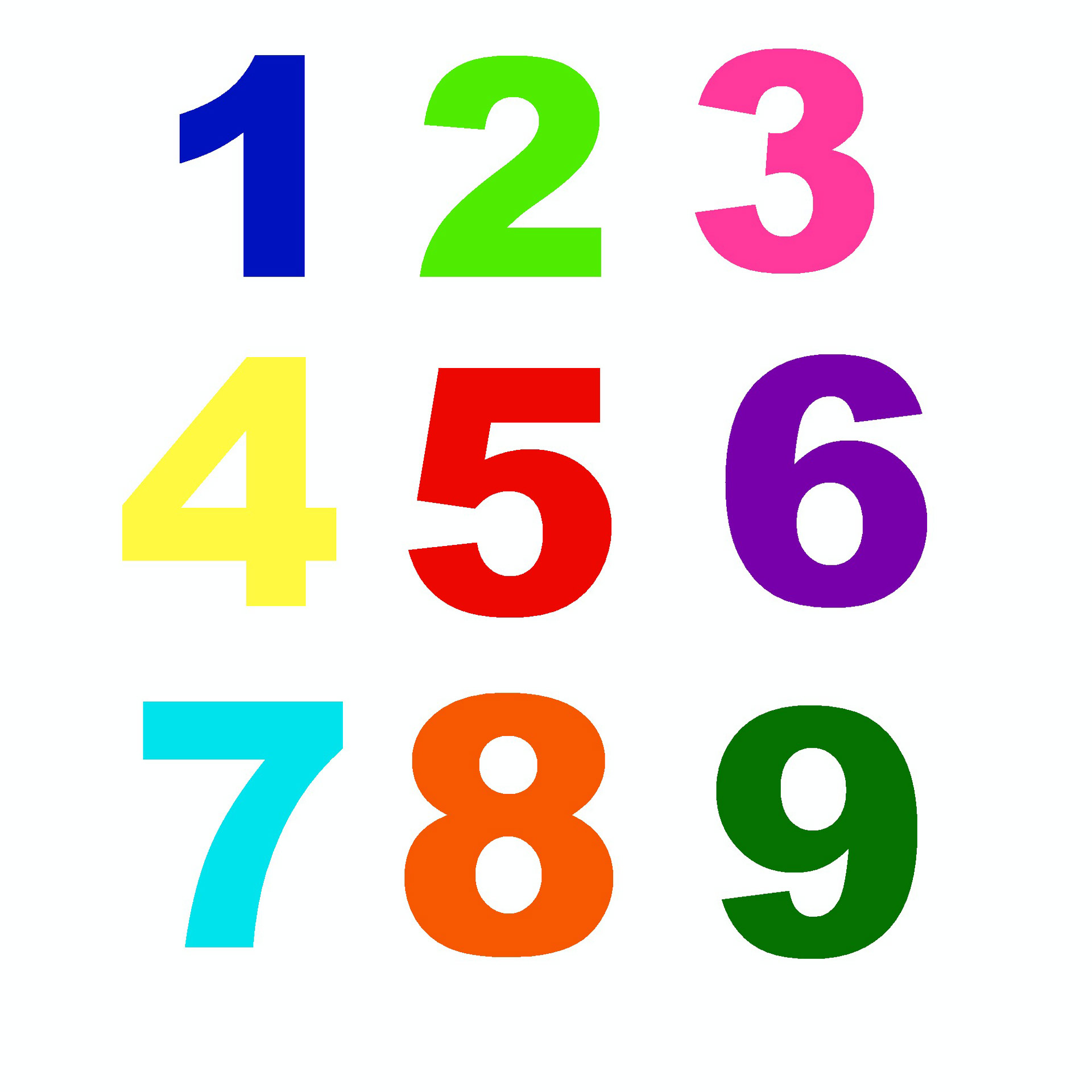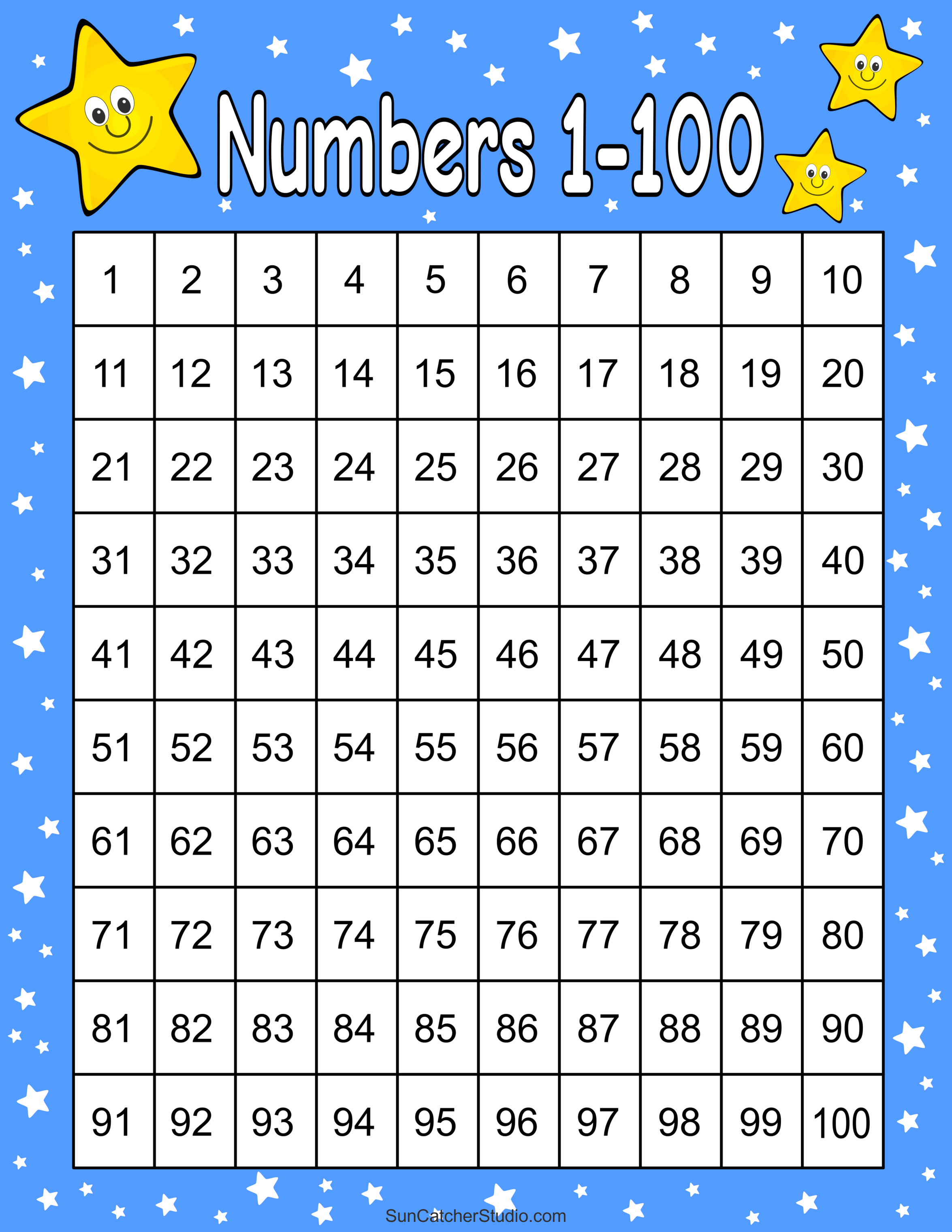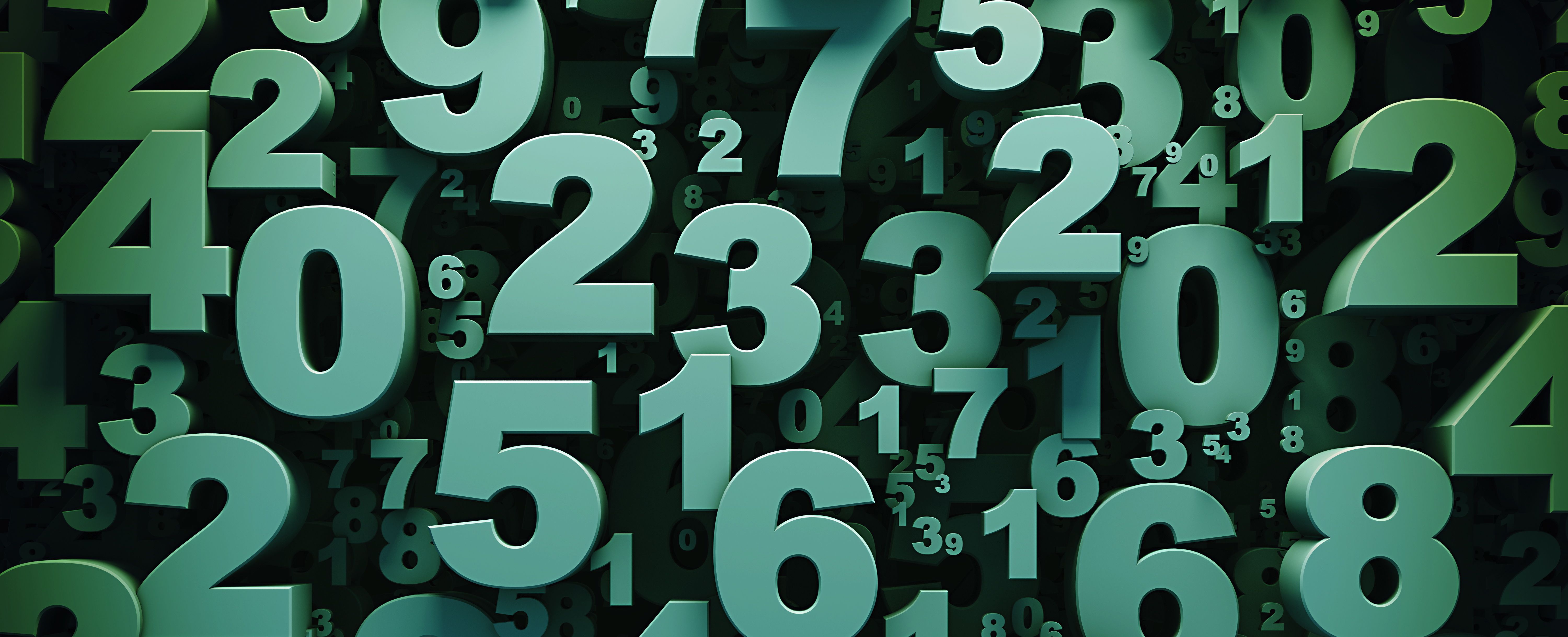Figuring out how to make your data work for you, especially when it comes to "numbers to cal," can feel like a real puzzle, you know? Many people find themselves looking at a collection of figures and wondering how to turn them into something meaningful, something that helps them make good choices or simply keeps things organized. Whether you are managing household expenses, tracking project progress, or just trying to keep tabs on your personal goals, getting those figures to do what you want them to do is, in a way, pretty essential.
This is where tools built for handling figures, like Apple's Numbers app, really come into their own. It is, quite simply, a very innovative spreadsheet application that was, apparently, designed with mobile devices in mind from the very start. It offers a straightforward way to deal with all sorts of numerical information, making it easier to create, change, and even share your sophisticated spreadsheets, which is, honestly, a big help for anyone.
We are going to take a closer look at how you can put these capabilities to good use, transforming your raw figures into useful calculations. We will talk about everything from the very basics of what numbers are, to how you can employ Apple Numbers for various tasks, including making charts and working with others in real-time. So, in some respects, get ready to explore how you can master your data and make it work for you, today, June 10, 2024.
Table of Contents
- What Are Numbers, Anyway?
- Apple Numbers: Your Spreadsheet Ally
- Frequently Asked Questions About Numbers to Cal
- Making Your Numbers Work for You
What Are Numbers, Anyway?
Before we jump into all the cool things you can do with a program like Apple Numbers, it is, you know, helpful to just think for a moment about what numbers actually are. At their core, a number is a count or a measurement, which is really just an idea we hold in our minds. We put these ideas down, or talk about them, using symbols called numerals, like the figure "5" or the word "five." These symbols are, in a way, how we share these ideas with others, making them a very basic part of mathematics and, honestly, our everyday existence.
Think about it: from setting an alarm for "7" in the morning to buying "3" apples at the store, numbers are, basically, everywhere. They help us keep track of things, measure distances, and even understand time itself. So, in some respects, getting comfortable with how figures behave is a very good first step toward making them work for your calculations.
Basic Types of Numbers
When you start dealing with figures, you will notice they come in different sorts, each with its own qualities, you know. For instance, natural numbers are what we often call counting numbers. These are the positive whole figures starting from one and going on forever, like 1, 2, 3, and so on. They are what you use when you are, say, counting how many items are in a list, or how many days are left until a certain date, which is pretty common in spreadsheets.
Then there are ordinal numbers, which, in a way, tell you about order or position. Think "first," "second," or "third." These are useful when you want to rank things or show a sequence within your data. Also, figures can be sorted into odd or even groups, based on whether they can be divided by two without anything left over. Four and ten, for example, are even, while five is odd. Knowing these simple classifications can, sometimes, help you sort or filter information in your spreadsheets, making them a little easier to manage.
Simple Math with Numbers
The very foundation of using "numbers to cal" involves basic arithmetic, which is, honestly, something we all do every day. This includes adding figures together, taking one figure away from another, multiplying them, and dividing them. These actions are, in a way, the building blocks for almost any calculation you will ever need to do, whether it is for a simple budget or a more complex financial projection. For example, if you want to know your total spending, you just add up all your expenses. If you need to figure out how much is left from your budget, you subtract what you have spent. It is, you know, all about these fundamental operations.
These simple operations are what programs like Apple Numbers are built to handle with great ease. They allow you to put these basic actions to work across large sets of data, letting the software do the heavy lifting. This means you can focus on what the figures mean, rather than getting caught up in the actual computations, which is, really, quite helpful.
Apple Numbers: Your Spreadsheet Ally
Apple Numbers is, truly, a standout tool for anyone who needs to manage figures, whether for work or for personal projects. It is, honestly, often considered the most creative spreadsheet application ever put together for a mobile device, though it works wonderfully on Macs and PCs too. It provides a friendly space where you can learn more about making, bringing in, changing, sending out, printing, and sharing really well-made spreadsheets, which is pretty useful. It is also, you know, available with most Apple devices, making it easily accessible for many people.
With Numbers, you can build truly lovely spreadsheets on a Mac, an iPad, or an iPhone. You can also work on them on a PC by using iWork for iCloud, which is a great way to keep your work consistent across different kinds of equipment. And, if you are using an iPad, you can even employ the Apple Pencil to interact with your spreadsheets, which, in a way, adds a nice touch of precision and creativity to your work. This flexibility means you can work on your "numbers to cal" tasks almost anywhere, which is, honestly, a big plus.
Creating and Shaping Your Spreadsheets
Starting a new project in Apple Numbers is, honestly, a breeze. You can begin with a blank canvas or pick from a variety of pre-made templates that are designed to look spectacular. These templates help you get a head start on all sorts of tasks, from budgeting to project tracking, so you do not have to build everything from scratch. This makes it much easier to organize your figures from the get-go, which, in a way, saves a lot of time and effort.
Numbers also gives you a lot of freedom to shape your spreadsheets exactly how you want them. You can easily add new tables, rearrange columns and rows, and even change the way your text and figures appear. This level of control means you can make your data not only accurate but also visually appealing and easy to read, which is, you know, quite important when you are sharing information with others or just trying to make sense of it yourself. It really lets you put your own touch on things.
Formulas and Functions: Making Numbers Work
The real magic of using "numbers to cal" in Apple Numbers comes from its ability to handle formulas and functions. These are, basically, instructions that tell the program how to perform calculations on your figures. Whether you need to add up a column of expenses, figure out an average, or calculate percentages, Numbers has a wide range of built-in functions that make these tasks simple. For instance, you can easily set up a cell to automatically sum all the figures above it, or to find the largest figure in a group, which is, truly, a time-saver.
Learning how to use these formulas can, in a way, transform your spreadsheets from static lists of figures into dynamic tools that automatically update as you change your data. This means less manual calculation for you and, honestly, a much lower chance of making mistakes. You can, for example, learn how to use Numbers for Mac to create organized spreadsheets using tables, charts, formulas, and much more, which is a great way to get started with more complex tasks. It is, you know, all about letting the software do the hard work.
Visualizing Your Data with Charts
Sometimes, just looking at rows and columns of figures does not quite tell the whole story, you know? This is where charts and graphs come in handy, and Apple Numbers excels at creating truly impressive visuals from your data. You can turn your figures into colorful bar charts, pie graphs, line graphs, and many other types of visual representations with just a few clicks. These visuals make it much easier to spot trends, compare different sets of figures, and understand the overall picture at a glance.
For example, if you are tracking sales figures, a line graph can quickly show you how sales have changed over time. If you are looking at budget categories, a pie chart can illustrate which areas are consuming the largest portions of your funds. These visual tools are, in a way, incredibly helpful for communicating your findings to others, or just for your own clearer understanding. Numbers, apparently, allows you to create extraordinary spreadsheets with impressive tables and visuals, which is pretty neat.
Working Across Devices and with Others
One of the really great things about Apple Numbers is how well it works across different Apple devices, and even on a PC through iCloud. With Numbers for iCloud, you can create, change, and share spreadsheets right on icloud.com, which is, you know, very convenient. This means you can start a spreadsheet on your Mac, make some changes on your iPad while you are out, and then review it on your iPhone later, all without missing a beat. This seamless experience is, honestly, a big plus for anyone who works on the go.
What is more, Numbers makes it incredibly easy to work with other people on the same spreadsheet in real-time. This means you and your colleagues or friends can all be looking at and changing the same document at the same moment, seeing each other's updates as they happen. This real-time collaboration is, in a way, a game-changer for group projects, making it much simpler to coordinate efforts and ensure everyone is working with the most current information. It is, truly, a very modern way to get things done together.
Importing and Exporting Your Work
You might already have spreadsheets created in other programs, like Microsoft Excel, and that is, you know, perfectly fine. Numbers for Mac lets you bring in an Excel spreadsheet right into Numbers from your Mac or even a PC. This means you do not have to start from scratch if you are switching over or if you receive a file from someone else who uses a different program. This compatibility is, honestly, a very helpful feature, making transitions much smoother.
Similarly, when you are done with your work in Numbers, you can also send it out in various formats. This includes exporting it back as an Excel file, or as a PDF, which is great for sharing your finished work with people who might not have Numbers installed. This ability to easily move your data in and out of the application means your work is never stuck in one place, giving you a lot of flexibility in how you manage and share your figures, which is, in a way, quite liberating.
Frequently Asked Questions About Numbers to Cal
People often have questions when they start thinking about using "numbers to cal" or working with Apple Numbers. Here are a few common ones, which, you know, might help clear things up for you.
How do I perform basic calculations in Apple Numbers?
To do basic calculations like adding or subtracting in Apple Numbers, you typically just select a cell where you want the answer to appear, then type an equals sign (=) to start a formula. After that, you can click on the cells you want to include in your calculation and use standard math symbols like plus (+), minus (-), asterisk (*) for multiplication, and slash (/) for division. For example, to add figures in cells A1 and B1, you would type `=A1+B1` into a cell. It is, basically, very straightforward once you get the hang of it.
Can I use Apple Numbers to track my budget or finances?
Absolutely, yes! Apple Numbers is, truly, a fantastic tool for tracking budgets and managing personal finances. It offers many templates specifically designed for these purposes, which, in a way, makes it easy to get started. You can set up tables to record your income and expenses, use formulas to calculate totals, and create charts to visualize where your money is going. This makes it, you know, quite simple to keep a close eye on your financial situation, which is, honestly, very helpful for anyone.
Is Apple Numbers compatible with Microsoft Excel files?
Yes, Apple Numbers does a good job of working with Microsoft Excel files. You can, in fact, bring in Excel spreadsheets into Numbers and also send your Numbers spreadsheets out as Excel files. While some very complex Excel features might not transfer perfectly, for most everyday tasks and calculations, the compatibility is, basically, quite strong. This means you can share your "numbers to cal" projects with people who use Excel without too much trouble, which is, you know, a big convenience.
Making Your Numbers Work for You
Using "numbers to cal" effectively, whether for simple sums or more involved data analysis, really comes down to having the right tools and knowing how to put them to good use. Apple Numbers, with its user-friendly design and powerful features, is, in a way, a wonderful option for anyone looking to organize their figures and gain insights from them. From its ability to create visually appealing spreadsheets to its seamless collaboration features, it offers a complete package for managing your data.
So, why not give it a try? Explore the various templates, play around with some formulas, and see how much easier it can be to handle your figures. You can learn more about Apple Numbers on their official support site, which is, honestly, a great resource. You can also learn more about spreadsheets on our site, and perhaps even discover more about data organization techniques that can help you make the most of your figures. It is, you know, all about taking that first step and seeing what you can achieve.
Detail Author:
- Name : Prof. Richmond Jaskolski
- Username : gklocko
- Email : wilma43@yahoo.com
- Birthdate : 1999-03-15
- Address : 79440 Woodrow Square East Eulaliahaven, MA 15343-4522
- Phone : 1-978-709-9202
- Company : Dach, Steuber and Ziemann
- Job : Ship Pilot
- Bio : Mollitia sit repellendus nostrum. Quasi ipsum autem fugiat sit odio ab. Sit molestias porro exercitationem error. Maxime sunt molestias vel maxime.
Socials
linkedin:
- url : https://linkedin.com/in/robel2020
- username : robel2020
- bio : Sint nulla debitis sit.
- followers : 4741
- following : 1366
facebook:
- url : https://facebook.com/suzanne_id
- username : suzanne_id
- bio : Nihil animi ex non consequatur. Dolores ea ut ut laboriosam.
- followers : 4949
- following : 86
instagram:
- url : https://instagram.com/suzanne9961
- username : suzanne9961
- bio : Repudiandae laborum hic facilis animi. Facere qui molestiae expedita itaque eos.
- followers : 5096
- following : 641
tiktok:
- url : https://tiktok.com/@robel2005
- username : robel2005
- bio : Eaque qui perferendis adipisci dolores. Quis vel distinctio eos.
- followers : 2809
- following : 2637
twitter:
- url : https://twitter.com/robel1988
- username : robel1988
- bio : Corrupti eaque ab qui in quisquam. Voluptas eaque deserunt illum omnis fugit aliquid veritatis. Voluptatem est eum velit delectus qui assumenda.
- followers : 2577
- following : 552


